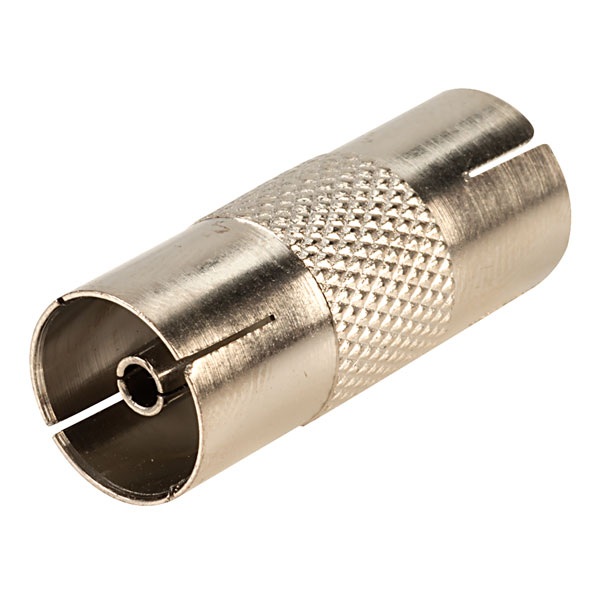

#Coax coupler generator#
One important application of this type is leveling the amplitude of a signal generator, providing a constant signal source for a test system.įigure 9: Schematic of a 3-port directional coupler in a levelled generator setup. The sample may also be used to drive feedback circuitry. This sample can be used for waveform monitoring, spectrum analysis, and other test and measurement functions. When connected in reverse, the coupled port provides a sample of the output (forward signal), attenuated by the coupling factor. Many RF systems include adjustments for minimum VSWR, while others include detection of excessive VSWR for circuit protection, usually by either reducing power or shutting down.įigure 8: Schematic of a 3-port directional coupler in a simple reflectometer setup. When placed at the transmitter output, this configuration can monitor the VSWR of the antenna system, both for measurement and monitoring. This allows measurement of reflected power, representing the degree of mismatch of the load. 2, the coupler provides a sample of the reflected wave at the coupled port. With this connection, the device may be used as a sampler for signal measurement, or to deliver a portion of the output signal to feedback circuitry.įigure 7: Performance curves for Mini-Circuits DDCH-50-13+ dual directional coupler Directional Coupler Applications Reflectometer In the forward direction (as shown), the coupled port samples the reverse wave, but if connected in the reverse direction (RF Input on the right), the coupled port would be a sample of the forward wave, reduced by the coupling factor. Since one of the coupled ports is internally terminated, only one coupled signal is available. Although it can be connected in reverse, this type of coupler is not reciprocal. A typical application is measurement of reflected power (or indirectly, VSWR). The basic function of a directional coupler is to sample the isolated (reverse) signal. 2, where the fourth port is internally terminated to provide maximum directivity. This type of coupler has three accessible ports, as shown in Fig.

Insertion Loss = L = 10 log (P1/P2) Types of Couplers Directional Couplers: The values of these characteristics in dB are: Insertion Loss: This accounts for the input power (P1) delivered to the transmitted (P2) port, which is reduced by power delivered to the coupled and isolated ports.Isolation: Indicates the power delivered to the uncoupled load (P4).Directivity: This is a measure of the coupler’s ability to separate waves propagating in forward and reverse directions, as observed at the coupled (P3) and isolated (P4) ports.Coupling Factor: This indicates the fraction of the input power (at P1) that is delivered to the coupled port, P3.The 3-port coupler can be connected in the reverse direction, where the port that was formerly coupled becomes the isolated port:įigure 1: Basic directional coupler configurations Performance characteristics: This is used in applications that only need a single forward coupled output. The lower diagram is a 3-port structure, which eliminates the isolated port. The top diagram is a 4-port coupler, which includes both coupled (forward) and isolated (reverse, or reflected) ports. 1 illustrates the operation of a directional coupler, followed by a description of the related performance parameters. An ideal coupler has infinite directivity and isolation, along with a coupling factor selected for the intended application. The basic properties of three- and four-port networks are isolation, coupling and directivity, the values of which are used to characterize the couplers. Ideally, a coupler would be lossless, matched and reciprocal. There are a few variations in the configuration of directional couplers, as we shall see below. Since they are passive devices, they also operate in the reverse direction, with signals injected into the main path according to the devices’ directionality and degree of coupling. Their basic function is to sample RF signals at a predetermined degree of coupling, with high isolation between the signal ports and the sampled ports - which supports analysis, measurement and processing for many applications. Directional couplers are an important type of signal processing device.


 0 kommentar(er)
0 kommentar(er)
